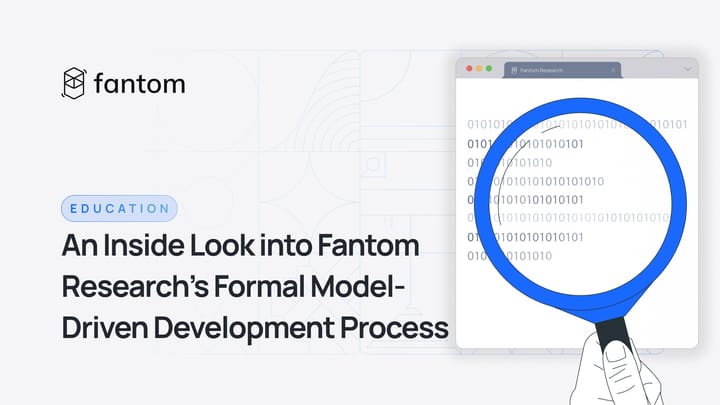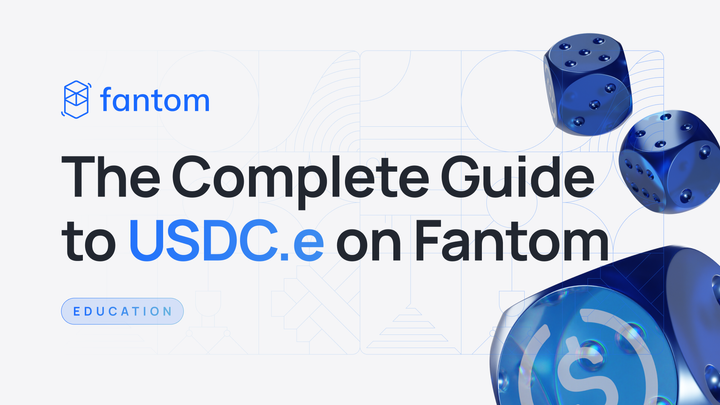Fantom, the Ethereum helper

After the success of Ethereum, allegedly better and faster platforms started rising, "Ethereum killers."
It's the end of 2020, and not only Ethereum is still alive, but it's thriving as never before. Those Ethereum killers? M.I.A.
Ethereum is here to stay.
- It has years of development and a vast developer community.
- its own programming language, Solidity, became the standard for smart contracts.
- 99% of the dApps are on Ethereum.
- the users and the T.V.L. (Total Value Locked) are on Ethereum.
It has successfully, and rightfully so, created a monopoly. If there ever was a global decentralized computer, that's Ethereum right now.
The Ethereum problem
However, Ethereum is showing its design limitations. With the increase of users and adoption, interacting with Ethereum has become increasingly more expensive.
Most DeFi users don't pay attention anymore to the outrageous fees, but let me tell you a secret. We're biased. Whoever thinks it's acceptable to pay anything more than almost $0 to send money or execute a trade is a fool.
Sure, it works, but "the real world" would never use crypto under these conditions. Not when there are perfectly working and wide-spread solutions that let us send money around, for example, for zero fees.
PayPal, Cash App, Venmo all created business models to beat the banks' fees and allow their users to send money for free.
With crypto, we have to do better than that. Right now, DeFi is an even more exclusive system than traditional finance. User Experience limitations aside, smaller investors have zero chance to participate when the fees are so high.
So what can be done? Taking for granted that Ethereum is here to stay and it's completely pointless trying to kill it, the only thing that we can do is get together and help it scale.
Fantom, Ethereum helper
This is where Fantom's vision comes along: Fantom as an Ethereum helper, a solution to transfer some of the load off Ethereum to Fantom’s high performance network.
Rather than trying to steal users or T.V.L. from Ethereum, together, we can prepare the infrastructure to accommodate a much larger user base. As a reminder, less than 1% of the world population is using crypto at the moment.
Non-zero sum game
Moving in the same direction and aiming for a common goal is a win-win solution for everyone. We hope that many other blockchains will follow suit to create an actual decentralized internet of finance and more.
The problem, or rather the opportunity, is that crypto is still early. Many fail to see the big picture because tribalism is still intense in this space; everyone is rooting for their team. It's human nature. We long for a sense of belonging, and it's easier to root for one team than for the whole league.
Bridges to the future
Cross-chain bridges will change the way we think of blockchains. They will allow different chains to communicate and share digital assets with a seamless flow, creating a large scale network of networks.
At some point, end-users won't know or care what chain they're using. They'll use dApps that are working at least as well as their centralized counterparts. That's all it matters, and that should be the ultimate goal for builders.
The end-user only wants to use the product. He/she doesn't wish Ethereum to win the race or this or that "Ethereum killer" to succeed. The end-user only wants to add value to his/her own life.
Bob might want to use DeFi so he can make some extra money and buy a new car. Alice maybe wants to hedge against the inflation of her national currency.
They certainly don't use crypto to make "insertchainname" win. They couldn't care less.
Setting up the environment
At Fantom, we're focusing on creating an ideal environment to help Ethereum scale. How?
- By continually improving the underlying tech – Lachesis – the aBFT consensus engine that allows transactions to be final in a couple of seconds and cost a fraction of a cent.High-speed and low-cost transactions open a whole new world for DeFi. Builders are working around and along with Ethereum’s limitations. What happens once those limitations are removed?
- By being fully compatible with Ethereum, developers can deploy their dApps on Fantom as they do on Ethereum.
- By establishing bridges to and from Ethereum. Some Fantom Finance users might want to use some of the DeFi dApps that are on Ethereum. And vice versa, some users that are currently using Ethereum dApps might be interested in the offering of Fantom's DeFi applications.With the newly-released Liquid staking, Fantom stakers can use their staked FTM as collateral to mint fUSD and use it on Ethereum, in a similar way people are now doing with Ethereum and DAI.
- By creating products such as Fantom Finance, both to showcase what's possible (yes, you don't need to spend $10 to execute a trade, and yes, you don't need to wait 10 minutes for the transaction to go through with a chance of being front-run by bots) and to create alternatives to Ethereum dApps.
The Ethereum v2 argument
Ethereum v2 is supposed to fix a lot of its current limitations. However, the fixes aren't out yet, and nobody knows when they will be available or if they will be sufficient.
Fantom is ready now, and the bridges to Ethereum will be available long before the full deployment of Ethereum v2, making Fantom an early scaling solution.
In any case, Ethereum v2 will only add value to both networks. Interoperability will be even faster, and user experience and opportunities for builders will increase. Once again, win-win. Non-zero sum game.
The progress so far
Bridges
On the bridges' side, Fusion already deployed AnySwap on Fantom. Ren Protocol is building a multi-chain bridge, and we're also developing our own bridge for resilience and to give users additional options.
Oracles
To give developers more flexibility – besides supporting the Ethereum Virtual Machine – we also integrated oracles. Oracles are a necessary and often vital component of dApps. At the moment, Band Protocol's oracles are fully working on Fantom, and Chainlink’s integration is underway. In addition to those, we also have our oracle.
Why more than one oracle provider? Because Fantom is a decentralized blockchain. We want to give developers complete freedom of choice over the tools they wish to use, rather than making an arbitrary decision.
Fantom Finance
Last week we hit an important milestone: the release of Liquid staking. With Liquid staking, you can unlock your staked FTM value and use it in the Fantom ecosystem without compromising the network security.
You can now mint sFTM, a synthetic asset pegged to the value of FTM, in a 1:1 ratio to your staked FTM. Minting sFTM is feeless. Additionally, to simplify the process, you can only mint 100% of your staked FTM value, and, of course, you don't need to use all the minted sFTM. You can then use sFTM to mint other synthetic assets within Fantom Finance.
In the future, Liquid staking will allow a flow of value towards fLend, fTrade, and Ethereum dApps – once bridges are released.
When minting sFTM, you still receive staking rewards for your delegation.
Here's an example of sFTM use, once bridges to Ethereum are in place:
- You have staked 100,000 FTM (worth around $2k now)
- You earn rewards for staking.
- You mint 100,000 sFTM
- You lock that and mint 500 fUSD
- You earn rewards for minting.
- You transfer 500 fUSD to Ethereum.
- You sell 500 fUSD for 500 DAI.
- You farm some high yield farming coin with 500 DAI.
- You sell the farming coin for profit.
- You do all the process backward to repay the debts.
- You made money without losing exposure to your FTM, generating staking rewards and minting rewards as well.
To unlock the staked FTM, you'll have to repay your debt in full.
After fMint, Liquid staking is one more building block of Fantom Finance.
What's coming?
- fLend and fTrade (formerly fSwap) are under development. We can't share an exact timeline as it leads to speculation and unmet expectations. However, rest assured that we're working hard to deliver the whole suite.
- Governance: we're finalizing on-chain governance as well. It will have some advanced characteristics that aren't common for governance. Users will be able to make proposals and vote using their FTM.
- Bridges and oracles integrations.
- Ledger support. While still pending, things started moving in the right direction.
Fantom in the real world
Finally, we're working on business development for Fantom and blockchain use and adoption in the real world.
The first concrete initiative has been the pilot program with the Afghan Ministry of Health to combat counterfeit drugs in the region. Currently, three Indian pharmaceutical companies are manufacturing and distributing medical products that are tracked on-chain on Fantom.
Patients can scan the Q.R. code on the packaging of a medicine to verify its authenticity.
We're also working on additional technology solutions in the region.
Why Afghanistan? Afghanistan has the infrastructure and will to speed up in adopting new technologies at the government level.
When it comes to the adoption of new technologies, small countries have a clear advantage. Less bureaucracy means faster decisions, and that's what's happening in Afghanistan. The work we're doing there will give Fantom more authority in the field, and other countries may follow suit.
Blockchain and CBDC might play the role of a global equalizer. Younger and leaner countries will be able to move faster and become more attractive for investors and residents alike, while giant behemoth countries may lag.
Conclusion
This summary of what we're working on at Fantom should give you a better understanding of what Fantom is, what we're building, and what we're aiming to do. It's not a complete list as certain things cannot be disclosed yet, but undoubtedly exciting times await.



